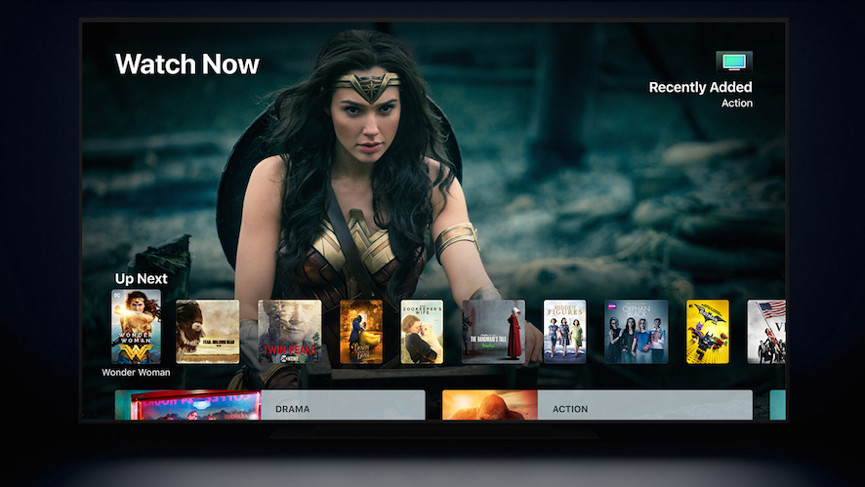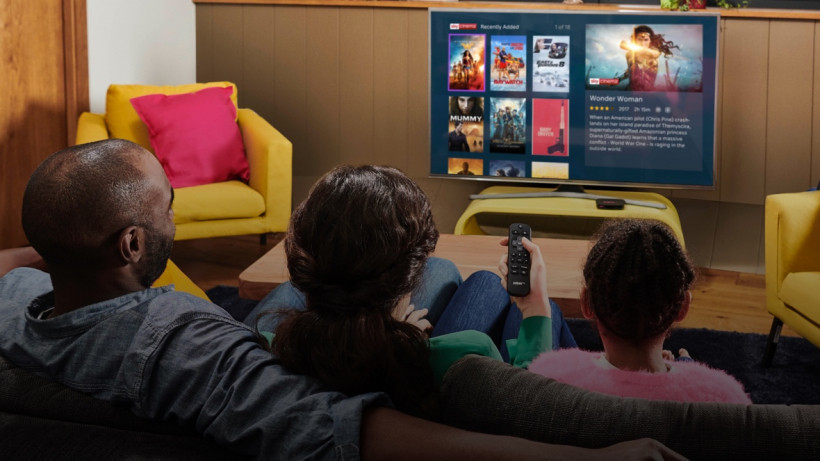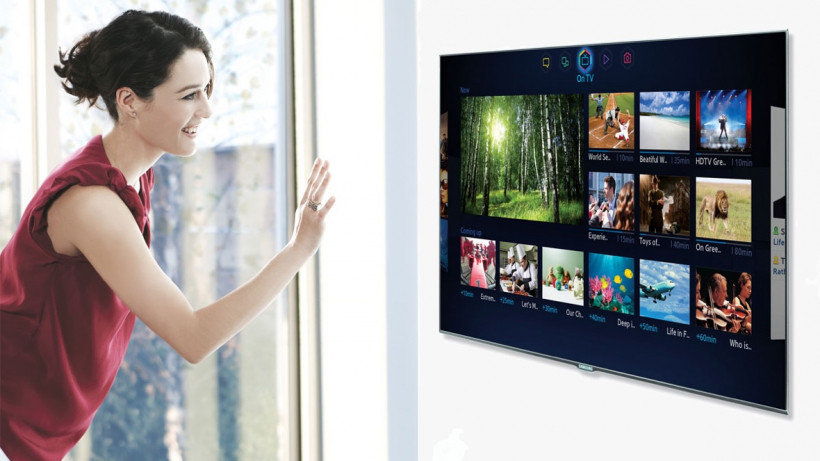OnePlus reckons it can change the face of smart TVs. If it can, should it?
Mobile phone maker OnePlus recently caused a stir when CEO Pete Lau revealed in a breathless blog post that his company was developing a OnePlus television.
It’s a bold move to say the least, given the difficulties any new brand faces with trying to get a foothold in the notoriously tough TV market. However, the reasons Lau gave for betting on a OnePlus TV may well have struck a chord with many TV owners: “Something that seems as simple as displaying the photos from your mobile phone to a television is still difficult to achieve. With the development of AI technology, though, our imagination is endless – and we are looking forward to the future.”
Read this: The best smart TV platforms
Lau thinks today’s ‘smart’ TVs are rubbish, but he believes that that his company’s experience in developing popular user interfaces for the mobile world can transform the TV world too.
But is he right? Are today’s smart TVs really that bad? And even if they are, is a mobile phone brand really best placed to turn things around?

The trouble with smart TVs
Having spent years testing smart TVs from pretty much every brand, I feel qualified to say that while some have got “smarter” over time, even the best sets remain far from where they should be.
The main reason for this is simple: TVs are not computers. They simply haven’t historically been designed to carry large processing brains, and so they struggle to manage the sorts of computational challenges posed by handling lots of different content sources, a rich and sophisticated interface, a search engine, user customisations, and potentially complex apps.
So it’s no surprise that some TV brands have recently started to crow about their latest TVs’ ever-more-powerful processors. And there’s no doubt that many smart platforms do indeed now run more fluidly and less buggily than they used to.
But still, smart TVs often feel awfully stupid.
For instance, trying to make the huge amounts of content options now available to any ‘connected’ TV easily accessible within the relatively static environment of a television screen is tough. Far too many years of smart TV development have focussed on the principle of quantity over quality where apps are concerned.
Do people really want their TVs to become computers?
Trying to search through and use hundreds, even thousands of apps on your TV just isn’t realistic or remotely necessary. For the vast majority of households, the only apps that really matter are video streaming platforms such as Netflix, Amazon Prime Video and the like. Yet time and again TV brands seem obsessively driven to deliver as many apps as possible, even when the vast majority of them just get in the way of the good stuff.
Some smart TV engines have at least got much better at prioritising video streaming apps in their interfaces. But tech companies would go far by learning just how little, actually, most households want from their smart TVs.
Another problem with smart TVs centres around personalisation. The ability to customise smart TV interfaces and experiences was pretty much non-existent for the first few smart TV generations, which immediately made them feel like ‘hostile environments’ – especially when compared with their mobile devices.
Once again, things have improved over the last couple of years. However, even where a smart TV system such as LG’s webOS or Samsung’s Eden system does allow plenty of customisation, the means to achieving that customisation seldom feel very intuitive – assuming a user even realises the customisation features exist at all.
Plus there are some key platforms – Android TV, we’re looking at you – that still put far too little control in their users’ hands.
Some attempts have been made to improve the user experience by having TVs ‘learn’ your viewing preferences, so that they can prioritise or ‘push’ links to content they think you’ll like. The lack of in-TV brainpower and back-end support for this, though, along with the way TVs are generally shared devices used by multiple members of a household, have generally made such recommendation/preference systems feel more dictatorial than helpful.

A painful history of interfaces…
How you actually use your smart TV menus is also a massive problem, as history has attested. Trying to use a TV remote control to access complex user interfaces can feel like trying to pull out wisdom teeth with tweezers – especially when it comes to having to type in email addresses and passwords.
And again, efforts have been made to overcome this. LG’s ‘Magic Remotes’ let you just point your remote at the part of the screen you want to select, while Philips provides remotes with some of its TVs that have full QWERTY keyboards on their rears. A new generation of ‘smart’ remote controls, on the other hand, have sought to drastically strip back the button count in a bid to make using smart TVs easier. But these tend to fail as soon as you want to do something beyond the most basic adjustments.
 #neverforget
#neverforget
Samsung even disastrously attempted a few years back to enable you to control your TV by waving your hand about, an idea unsurprisingly scuppered by the hand gestures being ridiculously tiring to perform, and seldom recognised properly by the TV’s crappy (and ill-advised) built-in camera. Not to mention it made you feel pretty stupid in the presence of friends and family.
The first attempts by Samsung’s TV division to introduce primitive voice controls were also a pretty abject failure. The TV seldom understood you properly, and required such specific phrases and dialogue ‘pathways’ that you practically had to learn a new language to use them. Which, of course, nobody in the real world could be bothered to do.
Voice control on TVs has undergone something of a renaissance over the past 18 months, thanks to the arrival of much more advanced voice recognition platforms (such as Amazon’s Alexa). Strangely, though, if my household and the households of my friends are anything to go by, people are much less inclined to talk to their TV than they are to a phone or a smart speaker.
The sorts of smart TV issue I’ve discussed here are, I guess, precisely what make OnePlus think there’s a massive opportunity for it to make a name for itself in the TV hardware world. Experience, though, isn’t exactly in its favour…

Can OnePlus change the smart TV world?
The first thing to say is that OnePlus is far from the first chiefly mobile brand that reckoned it could revolutionise the TV world. Sony, LG and Samsung, of course, all have mobile divisions. Though crucially, in the case of these companies, their TV business pre-dates their mobile business.
If Apple still hasn’t found a way to bring its smart TV to market almost a decade after first talking about it, you have to wonder if OnePlus can
Apple has famously dropped numerous hints about how it thinks it could change the smart TV world. Current CEO Tim Cook stated back in 2012, “When I go into my living room and turn on the TV, I feel like I have gone backwards in time by 20 to 30 years. It’s an intense area of interest [for Apple]. I can’t say more than that.”
Even more famously, Apple founder Steve Jobs says, in his official biography by Walter Isaacson, that, “I’d like to create an integrated television set that is completely easy to use. It would be seamlessly synced with all of your devices and with iCloud… It will have the simplest user interface you could imagine. I finally cracked it.”
Except that if Jobs did crack it, we never got to see the results. This is pretty telling. For if even a brand with the interface track record and vast resources of Apple still hasn’t found a way (or a reason) to bring an Apple television to market almost a decade after first talking about it, you have to wonder where OnePlus will be different.
Read this: A guide to Google Assistant for TVs
Then there’s Android TV. Google’s stab at ‘revolutionising’ the smart TV space from a computer/mobile device background lead to what has now long been for me the worst smart TV interface of all. Found on Sony and Philips (Europe) TVs, among others, its interface is clunky, its layout shows little understanding of what TV users really want to prioritise, it’s traditionally been very buggy and it’s painfully short of customisation options.

It does, at least, offer instant compatibility with Chromecast and, on recent implementations, Google Assistant. Android TV delivers at least a sense of the all-round system integration that Steve Jobs was talking about. But to say it still has a long way to go would be a pretty epic understatement.
LG’s webOS story might give us – and OnePlus – a bit more hope. This Linux-based operating system was originally developed by Palm for use on its portable devices. But it eventually ended up being owned by LG, which poured huge resources into turning it into what was on its TV launch in 2014 easily the most attractive, slick, easy to use and sensibly focused operating system in the smart TV world.
The thing about webOS, though, is that while aspects of the operating system came from a mobile background, the company that took it and turned it into a TV operating system was approaching its R&D from very much a TV background and perspective.
So the big question is: has OnePlus really taken all of this history into consideration with its own TV plans? Will it really understand that what works for mobile will not necessarily work for TV? That the TV and mobile worlds are actually arguably polar opposites when it comes to developing user interfaces?
Has OnePlus really taken all of this history into consideration with its own TV plans?
In fact, I can’t help but wonder if most people even want their TVs to be smart. Or, at least, smart beyond being able to access just the most basic TV streaming services.
Televisions are fundamentally passive, ‘laid back’ devices. People have spent decades just turning them on, sitting back and relaxing. Do they really want TVs to suddenly become effectively computers, complete with all the bugs, crashes, complexity and endless firmware updates that entails?
The fact that TVs are predominantly shared experiences, too, limits how ‘smart’ they can truly be. It’s hard or even impossible to deliver an intuitive, customised experience that works for all the separate members of a particular household.
With all this in mind, I can’t help but wonder if the best way forward might be to actually make TVs dumber again, and outsource their ‘smartness’ and operating systems. Maybe to external set top boxes, or even better, to devices such as mobile phones and tablets that are much better placed to handle them.
Read next: How to control your TV with Alexa
Research shows time and again that more and more of us are ‘second screening’ already when watching TV, so why not simply reproduce the TV’s full operating system on phones and tablets so that they essentially become advanced remote controls for your TV?
It’s possible, of course, that this sort of thing is exactly what OnePlus has in mind. Or maybe the brand really does have some hitherto unimagined insight into TV interface design that will finally convince us all that the humble gogglebox need be humble no more.
Honestly, I hope it does. But it’s fair to say while we wait and see that the weight of history is seriously stacked against it.





